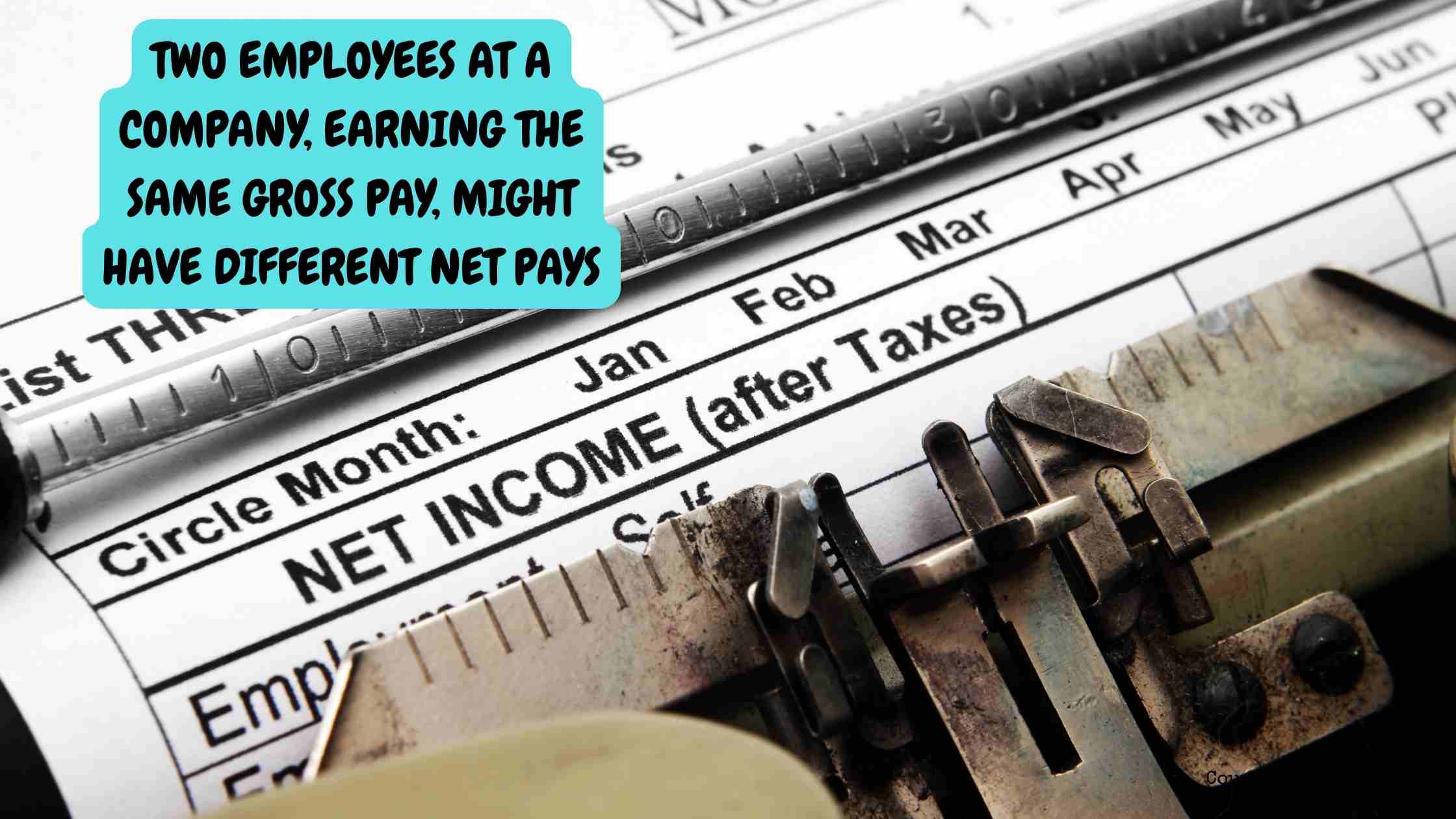
Why Two Employees Earning the Same Gross Pay Might Have Different Net Pays
When two employees at a company earn the same gross pay, it’s natural to assume their take-home pay would be identical. However, I’ve noticed that net pay often varies due to individual circumstances and choices. Understanding why two employees earning the same gross pay might have different net pays sheds light on payroll deductions and personal financial decisions. In this article, I’ll explain five key reasons for these differences, drawing from my knowledge of payroll systems and tax regulations as of May 2025. These factors clarify the gap between gross and net pay. Let’s dive into what causes variations in net pay and how it impacts employees.
Table of Contents
Ever wondered why your coworker’s paycheck looks different despite earning the same? It’s not just taxes at play. Ready to explore five reasons for differing net pays?
Paychecks are personal, even when gross pay matches. I’ve seen how choices and status change what you take home. Let’s uncover why net pay varies for employees.
1. Different Tax Withholding Elections
Employees choose how much federal and state income tax to withhold based on their W-4 form, leading to varied net pays. This is a primary reason for different net pays. I’ve seen coworkers adjust withholdings based on their financial needs.
- How it works. One employee might claim fewer allowances (higher withholding) for a bigger refund, while another claims more (lower withholding) for more take-home pay.
- Example. In 2025, a single employee with $50,000 gross pay and 0 allowances has $6,500 withheld federally, vs. $4,800 with 2 allowances, per IRS tables.
- Impact. Higher withholding reduces net pay but may increase tax refunds.
Why it varies? Personal tax preferences shape how much is deducted upfront.
2. Differing State or Local Tax Rates
Employees living or working in different locations face varying state and local taxes, affecting net pay. This cause of net pay differences depends on geography. I’ve noticed friends in different states take home less despite similar salaries.
- Examples. California’s top state tax rate is 13.3%, while Texas has no state income tax. New York City adds a 3.876% local tax.
- Impact. An employee in California with $50,000 gross pay might lose $4,000 to state taxes, while a Texas employee pays $0.
- Variations. Even within states, cities like Philadelphia impose local wage taxes (3.79% in 2025).
Why it matters? Location-based taxes create significant net pay gaps.
3. Unique Benefit Elections
Employees choose different benefits, like health insurance or retirement contributions, which reduce net pay. This is a key reason for varying net pays. I’ve seen coworkers opt for pricier plans that cut their checks more.
- Examples. One employee picks a high-premium family health plan ($500/month), while another chooses a single plan ($200/month). A 401(k) contribution of 10% vs. 5% also lowers net pay.
- Impact. A $50,000 earner contributing $5,000 to a 401(k) takes home $3,000 less annually than one contributing $2,500, pre-tax.
- Choices. Opting out of benefits or choosing cheaper plans increases net pay.
Why it differs? Benefit preferences reflect personal needs, altering deductions.
4. Additional Deductions or Garnishments
Court-ordered or voluntary deductions, like wage garnishments or union dues, vary by individual. This factor in net pay differences can significantly reduce take-home pay. I’ve heard of colleagues facing unexpected garnishments that shrank their checks.
- Examples. Child support (up to 50% of disposable income) or student loan garnishments (15% max, per 2025 federal rules). Union dues might deduct $50/month.
- Impact. An employee with a $1,000 monthly garnishment loses $12,000 annually compared to one without.
- Other deductions. Charitable contributions or loan repayments also vary.
Why it happens? Legal or personal obligations create unique paycheck impacts.
5. Marital Status and Dependents
An employee’s marital status and number of dependents affect tax exemptions and credits, changing net pay. This reason for net pay variation ties to family structure. I’ve seen married coworkers with kids take home more due to tax breaks.
- How it works. Married employees filing jointly with dependents face lower withholding than single filers. In 2025, a married filer with two kids might reduce withholding by $2,000 annually via the Child Tax Credit.
- Example. A single employee with $50,000 gross pay has $6,000 withheld federally, while a married employee with dependents might have $4,500 withheld.
- Impact. Family status directly lowers tax deductions, boosting net pay.
Why it varies? Tax rules reward dependents and joint filing, creating disparities.
Read our blog on Is Consumer Services a Good Career Path?
What’s Next for You
Understanding why two employees earning the same gross pay might have different net pays is like decoding the puzzle of your paycheck. I’ve been struck by how these five reasons—tax withholding elections, state/local taxes, benefit choices, additional deductions, and marital status—reveal the personal nature of net pay. In 2024, 30% of U.S. workers adjusted W-4s for better cash flow, per IRS data, showing how choices matter. Knowing these factors empowers you to optimize your take-home pay. Will you ignore your paycheck’s details, or take control of your finances?
Here’s how to act:
- Review your W-4. Adjust withholdings via IRS.gov’s Tax Withholding Estimator.
- Check deductions. Compare benefit costs and opt for plans that fit your needs.
- Plan for taxes. Consult a tax professional to account for state or family status.
Your paycheck is yours to shape. Why net pay varies is about choices and context. Start today to maximize what you take home.
Cite this article
You can copy and paste your preferred citation format below.
Martin, L. & Arquette, E.. (2025, May 31). Why Two Employees Earning the Same Gross Pay Might Have Different Net Pays. Coursepivot.com. https://coursepivot.com/blog/explain-why-two-employees-at-a-company-earning-the-same-gross-pay-might-have-different-net-pays/



